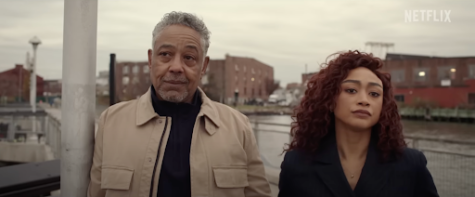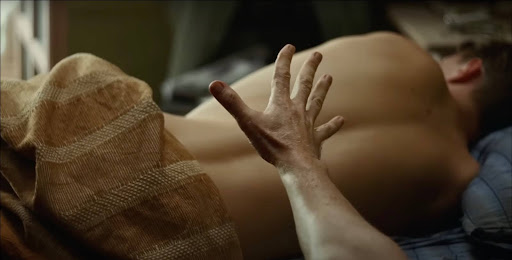
Binge-watching is enormous in the entertainment industry today, thanks primarily to the growth of streaming culture over the past decade or so. This allows people to access content more easily, which facilitates better word-of-mouth discussion about these shows.
Netflix’s latest series, “Kaleidoscope,” takes this common phenomenon and forces it to evolve.
The show follows Ray Vernon — played by Giancarlo Esposito — as he assembles his crew and plots a massive heist to steal $7 billion. From Vernon’s backstory to the heist and its aftermath, the overall story spans 24 years, with the finale documenting the actual heist.
Creator Eric Garcia crafted this eight episode series to be consumed in any order. Of the color-coded episodes, “White” is intended to be the finale. There are time jumps between each installment, and most viewers will have watched the series in a non-chronological order. After all, there are 5,040 ways to finish the series — assuming “White” is always watched last.
Esposito shines as a troubled father, ex-con and ringleader of an intricate heist. Viewers get to see the multi-faceted character of Vernon through almost every point of his life. He brings so much sizzle to the character, especially through his interactions with his daughter Hannah (Tati Gabrielle). Their plot line is extremely compelling and adds a personal touch to a show which lacks it. Esposito reminds us that the show is better off with him because of it.
Connor’s Order: Green-Yellow-Blue-Violet-Orange-Red-Pink-White
This order did an excellent job of introducing the main characters early, allowing the audience to feel more invested in the fates of each individual member of the crew. Additionally, with such large time jumps between some of the episodes, getting most of the character development out of the way early made it easier to consume the final episodes.
It is important to note, however, that this order leaves audiences in the dark about a crucial side plot until late in the series. While it would certainly be confusing to open the series with that – as Olivia did in her order – viewing them late also adds extra layers to the show’s final act that take away from the central story.
Admittedly, “Kaleidoscope’s” critical outlook was poor before the finale. It truly provides crucial context to the events of previous episodes, and the series cannot be judged fairly without it. While that is certainly the case for many shows anyway, the non-chronological approach to this show makes it much more susceptible to relying on the finale for the payoff.
Olivia’s Order: Orange-Yellow-Green-Blue-Violet-Red-Pink-White
While this order starts on an episode with little exposition, the second half provides an ending that somehow makes sense. Starting with “Orange” leaves viewers in a tricky place, and unsure who the real protagonist is. “Yellow” introduces viewers to an eclectic crew of criminals preparing for the ultimate heist, but the exciting momentum breaks with “Green” and “Violet.” The episodes are meaningful to the plot, but the action is much slower than the excitement of the present-day.
With episodes “Red” and “Pink” situated before the finale, it allows for a level of suspense, since both episodes take place after the heist. Viewers are left wondering what actually happened during the heist and must put the pieces together themselves.
Without the use of the color coded episodes that can be watched in any order and still make sense, the show loses its excitement and just becomes a mediocre heist show. The randomized order adds to the suspense, and creates plot holes disguised plot twists waiting to come to fruition.
Garcia’s approach provides so much beyond uniqueness or entertainment value; the project seeks to exploit this era’s infatuation with online discourse in order to drive viewership. Every conversation about “Kaleidoscope” begins with a simple question: “What order did you watch it in?” Social media sites such as TikTok and Twitter were flooded with debates on what the best sequence was, and many rewatched the series immediately to find new perspective on some of the show’s twists and turns.
This is not to denounce the show in any way, but simply to highlight what marketers at Netflix seem to see as the future of promoting content on streaming. Why pay more to promote the show when social media users can do that for you? In the age of TikTok’s “For You” page, projects that encourage online discussion will certainly draw larger audiences. “Kaleidoscope” has achieved this, so it would not be surprising to see similar concepts get rolled out in the coming years. We will have to wait and see what Netflix — and certainly its competitors — come up with next. For now, “Kaleidoscope” and its several ways of watching it will have to do.









